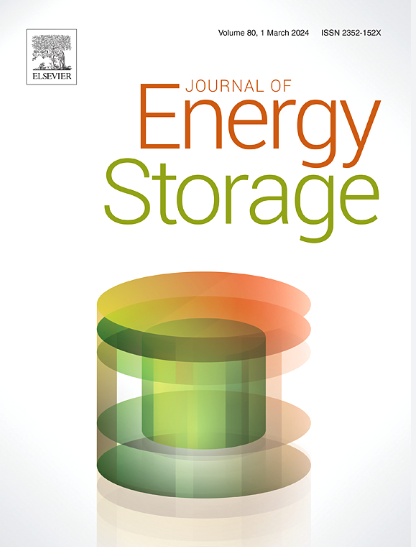层状盐层储氢地质优化:渗透和泄漏动态评估
IF 8.9
2区 工程技术
Q1 ENERGY & FUELS
引用次数: 0
摘要
氢作为一种环境友好型能源,有望成为未来能源革命的主要候选者,在全球能源系统中具有巨大的潜力。在各种储存方法中,盐穴因其惰性环境和稳定的物理结构而脱颖而出,使其成为未来储氢最有希望的选择。在这项研究中,我们首先阐明了氢的物理和化学性质,强调了它的低分子量、低溶解度、高扩散速率和强渗透性。详细分析表明,盐岩具有低渗透性、良好的蠕变和自愈特性。建立了盐穴储氢三维地质模型,分析了不同注采频率和操作压力间隔对盐穴密闭性的影响。采用渗透范围、孔隙压力分布、孔隙压力演化、泄漏量等指标体系评价溶洞的密闭性。主要研究结果表明,盐洞适合储氢,注采频率对氢渗透范围的影响最小,而盐洞近场环境对孔隙压力的影响显著。操作压力的升高显著增加了渗透范围和累积泄漏量。更大范围的压力波动与泄漏率变异性的增加有关。某盐库在30年的运行周期内,运行压力每增加1mpa,漏氢量就会增加20吨。因此,盐穴非常适合具有灵活注入和生产频率的储氢应用。然而,在增加操作压力显著提高能源容量的同时,也增加了氢气泄漏的风险。因此,确定合适的储氢压力区间至关重要。该研究为评估盐洞储氢装置的密封效果提供了有价值的见解,有助于优化其设计和可持续能源系统的运行。本文章由计算机程序翻译,如有差异,请以英文原文为准。
Optimizing geological hydrogen storage in bedded salt formations: Assessing permeation and leakage dynamics
Hydrogen, as a leading candidate for the future energy revolution due to its promise as an environmentally friendly energy source, presents significant potential for global energy systems. Among various storage methods, salt caverns stand out due to their inert environments and stable physical configurations, making them the most promising option for future hydrogen storage. In this study, we first elucidate the physical and chemical properties of hydrogen, emphasizing its low molecular weight, low solubility, high diffusion rate, and strong permeability. Detailed analyses of salt rock properties reveal their low permeability, favorable creep, and self-healing characteristics. A 3D geological model of salt cavern hydrogen storage is constructed to analyze the impact of various injection-production frequencies and operational pressure intervals on the tightness of salt caverns. An index system composed of permeation range, pore pressure distribution, pore pressure evolution, and leakage amount is used to assess the tightness of the caverns. Key findings from our research indicate the suitability of salt caverns for hydrogen storage, the minimal impact of injection-production frequency on hydrogen permeation range, and the significant influence on pore pressure in the near-field surroundings of the cavern. Elevating operation pressure markedly increases the permeation range and cumulative leakage amount. A broader range of pressure fluctuations correlates with increased variability in leakage rates. Over a 30-year operational period for a specific salt cavern, each 1 MPa increase in operation pressure results in a 20-ton increment in hydrogen leakage. Therefore, salt caverns are well-suited for hydrogen storage applications with flexible injection and production frequencies. However, while increasing operational pressure significantly enhances energy capacity, it also elevates the risk of hydrogen leakage. Therefore, it is crucial to determine an appropriate pressure interval for hydrogen storage. This research provides valuable insights for evaluating the sealing effectiveness of salt cavern hydrogen storages, contributing to the optimization of their design and operation for sustainable energy systems.
求助全文
通过发布文献求助,成功后即可免费获取论文全文。
去求助
来源期刊

Journal of energy storage
Energy-Renewable Energy, Sustainability and the Environment
CiteScore
11.80
自引率
24.50%
发文量
2262
审稿时长
69 days
期刊介绍:
Journal of energy storage focusses on all aspects of energy storage, in particular systems integration, electric grid integration, modelling and analysis, novel energy storage technologies, sizing and management strategies, business models for operation of storage systems and energy storage developments worldwide.
 求助内容:
求助内容: 应助结果提醒方式:
应助结果提醒方式:


